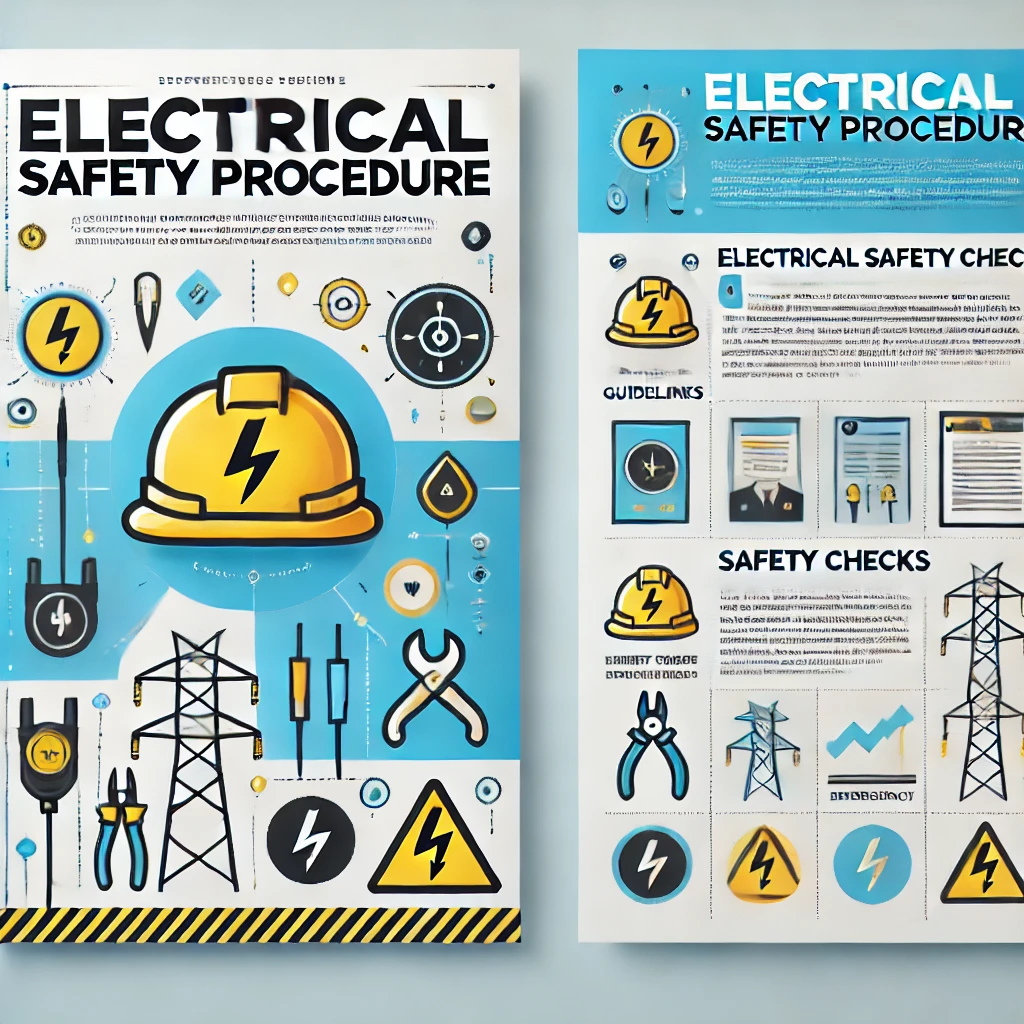Electrical Safety Procedure Template ensures it is critical to adhere to an electrical safety procedure to safeguard people and property from the dangers posed by electrical hazards. These protocols are essential for averting mishaps, harm, and death. This tutorial covers the fundamental stages for electrical safety, what an electrical safety procedure comprises, and useful workplace safety advice. At the conclusion of this piece, you may also obtain an MS Word template for an electrical safety process.
An Electrical Safety Procedure: What Is It?
A methodical series of instructions and guidelines created to guarantee safe practices when working with or near electrical equipment is known as an electrical safety process. By describing precautions, safe work practices, and emergency response procedures, it seeks to reduce the dangers of electrical shocks, burns, fires, and other hazards. Adherence to workplace health and safety regulations requires these protocols.

What Are the Five Electrical Safety Steps?
By following these five steps, you can significantly reduce the likelihood of electrical mishaps:
- Determine Electrical Hazards: Perform routine inspections to find possible risks, including exposed cables, overloaded circuits, or malfunctioning machinery.
- Ensure Proper PPE: Make sure that employees are wearing the proper personal protective equipment (PPE), such as safety goggles, insulated gloves, and clothes that can withstand flames.
- De-Energize Equipment: Before doing any electrical system maintenance or repairs, always turn off the power sources.
- Test Tools and Equipment: Check electrical tools and equipment for wear or damage on a regular basis.
- Implement Lockout/Tagout (LOTO) Procedures: To guarantee that power sources stay de-energized while doing maintenance, use lockout/tagout systems.
The Five Electrical Safety Rules: What Are They?
Fundamental ideas that are applicable everywhere are the five golden guidelines of electrical safety:
- Disconnect Fully: Ensure that you have disconnected all power sources from the electrical circuit or device.
- Protect Against Reconnection: To stop unintentional power supply reconnection, use locks or tags.
- Check for Voltage Absence: Use a voltage tester to make sure that the circuit has been de-energized.
- Ground the Circuit: To get rid of any remaining energy, set up a temporary grounding system.
- Employ the Right Tools and Equipment: Only utilize electrically rated tools and equipment.
Ten Workplace Electrical Safety Tips
- Examine the Equipment Frequently: Examine electrical equipment and systems on a regular basis.
- Avoid Overloading Circuits: To avoid overheating and circuit damage, distribute loads evenly.
- Label Electrical Panels Clearly: Ensure that all electrical panels have clear labels for easy identification.
- Avoid Putting Liquids Near Electrical Sources: Keep liquids away from electrical devices.
- Employee Education: Give every employee thorough instruction on electrical safety.
- Keep Panels Clear: To provide prompt access in an emergency, keep electrical panels clear of obstructions.
- Replace Damaged Cables: As soon as possible, replace frayed or damaged cables.
- Make Use of GFCIs: To prevent electrical shocks, install ground fault circuit interrupters (GFCIs).
- Observe the Manufacturer’s Guidelines: Follow the directions on any electrical devices.
- Report Electrical Dangers: Encourage employees to report electrical dangers as soon as possible.
Download the Microsoft Word Electrical Safety Procedure Template
We have prepared a thorough electrical safety protocol template for your convenience, which you may download and modify for your place of employment. Get the MS Word version of the Electrical Safety Procedure. Make sure your company maintains compliance and your workers stay safe.
Organizations can lower the risks related to electrical hazards and provide a safer working environment by implementing these suggestions. Be proactive and be careful!

